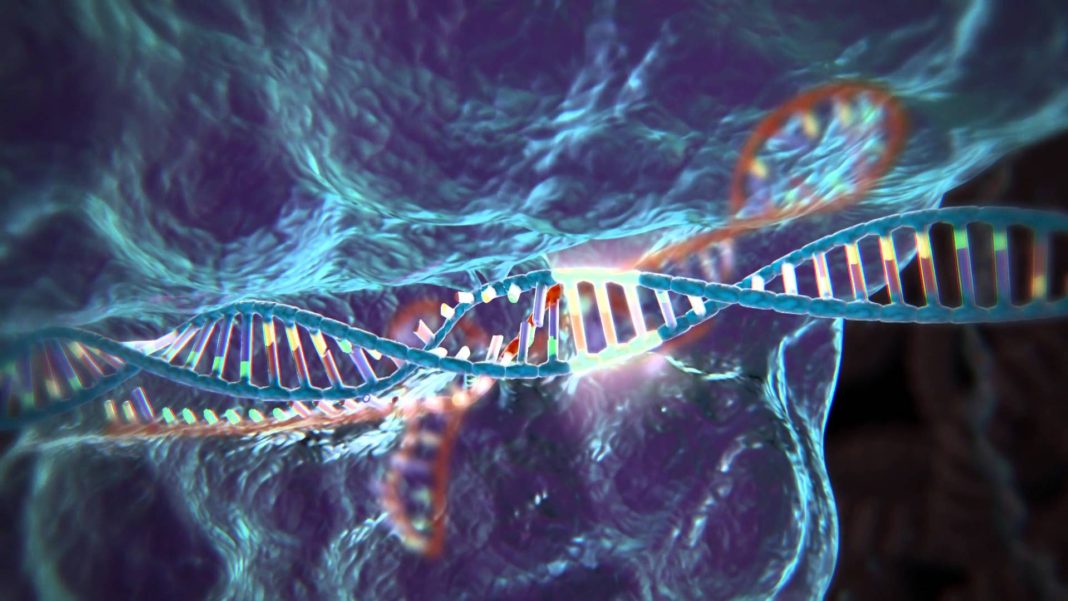CRISPR is big news, and it will continue to be big news throughout 2017. Genetic engineering and gene editing technology make it possible to cure some diseases and illnesses by simply altering the person’s DNA. With the help of CRISPR/Cas9 technology researchers are able to snip individual genes, either deleting them all together or replacing them with new ones. As well as this CRISPR can also be used to make an RNA copy of a gene sequence, image the genome in living cells, or edit the epigenome, but it’s still early days, and this theory still needs to be proved. But scientists are very hopeful about the CRISPR technology and all the amazing things it could potentially bring. Keep reading for a rundown of just some of the ways CRISPR could change the world:
- Identify potential Alzheimer’s treatments: A CRISPR-based platform has been developed by Martin Kampmann and the team at the Institute for Neurodegenerative Diseases at the University of California, San Francisco that’s able to identify controlling genes that drive certain neurodegenerative diseases such as Alzheimer’s and Parkinson’s. Moving forward the goal is to uncover new strategies for developing more specialized treatments.
- Reduce our reliance on petrochemicals: Over at the University of California-Riverside researchers have been studying how they can best use CRISPR to control a particular type of yeast that can turn sugar into hydrocarbons. The benefit in doing this is to eventually have engineered a yeast that can create some of the components needed for certain adhesives, polymers, and fragrances. But also, CRISPR-engineered yeast could act as a replacement for petrochemicals, cutting down our reliance on the harmful substances.
- Work out the role of different genes: Scientists could tell us the CRISPR technology to knock out certain genes and monitor the effects this had afterward. This would help them gain a much deeper understanding of different genomes and their role within our bodies. One example of where CRISPR would be helpful is in regards to the resurrection plant. This plant goes into a state of near-death during times of drought, but when rain returns, the plant is revived. Researchers could use the CRISPR technology to see if they could use genetic editing to apply this technique to other plants.
- Destroy viruses such as HIV, hepatitis, and herpes: Bryan Richard Cullen at Duke University Medical Center uses CRISPR to develop a vector that attacks DNA viruses in cultured cells. He says, “We hope to move these studies into animal models in the very near future to see if we can cure animals bearing, for example, an HPV-16 induced tumor, or with a high level (Hepatitis B) infection of their lives.”
- Use plants to make drugs and vaccines: Using CRISPR to target and insert specific genes into plants is an excellent way to understand better how plants genes are regulated, how they repair DNA, and how they respond to foreign molecules. Research projects in the UK include those that are working on developing plants that could make human therapies and vaccines.
- Develop new cancer treatments: A clinical trial has just been given the go ahead that will involve using CRISPR to modify the cells of 18 cancer patients to make them more efficient in fighting off the disease and destroying the cancerous cells. Others will be using CRISPR to make safer and more efficient treatments for tumors that are caused by errors in the DNA.
- Engineer plants to improve food security: Plant geneticists are currently developing methods in which to use CRISPR to modify targeted plant genomes. The CRISPR technology may just help researchers understand how they can improve the rate of photosynthesis, increasing crop yields significantly.
**Clustered regularly interspaced short palindromic repeats (CRISPR, pronounced crisper) are segments of prokaryotic DNA containing short, repetitive base sequences. Each repetition is followed by short segments of spacer DNA from previous exposures to foreign DNA (e.g., a virus or plasmid). Small clusters of Cas (CRISPR-associated system) genes are located next to CRISPR sequences. Via Wikipedia
More News To Read
- How Exactly Does the Em Drive Defy the Laws of Physics?
- H&M Is Simply Feeding The Unsustainable Clothes Manufacturing Market
- How VR Will Become The Storytelling And Marketing Devices Of The Future
- Cancer Can Now Be Detected With Thanks To A Simple Breath Test
- Major Questions We Still Have About the Universe Today










